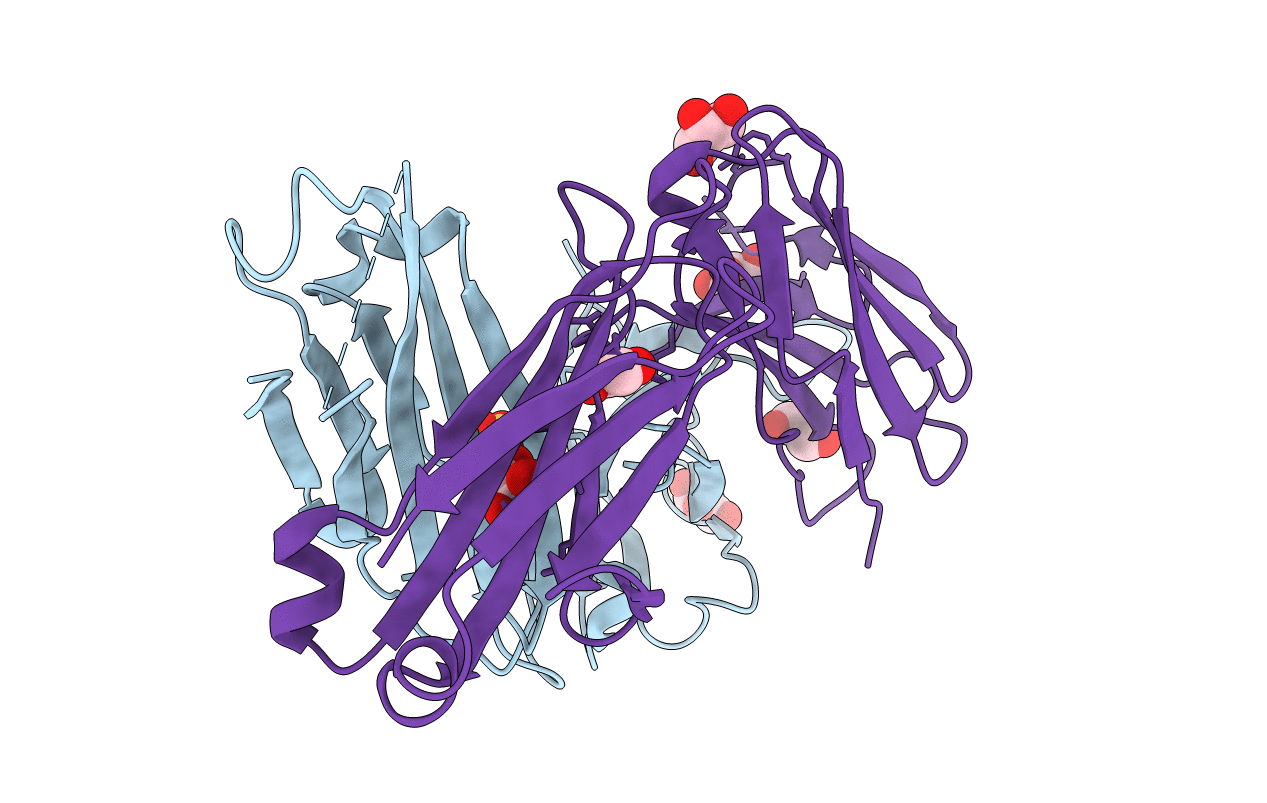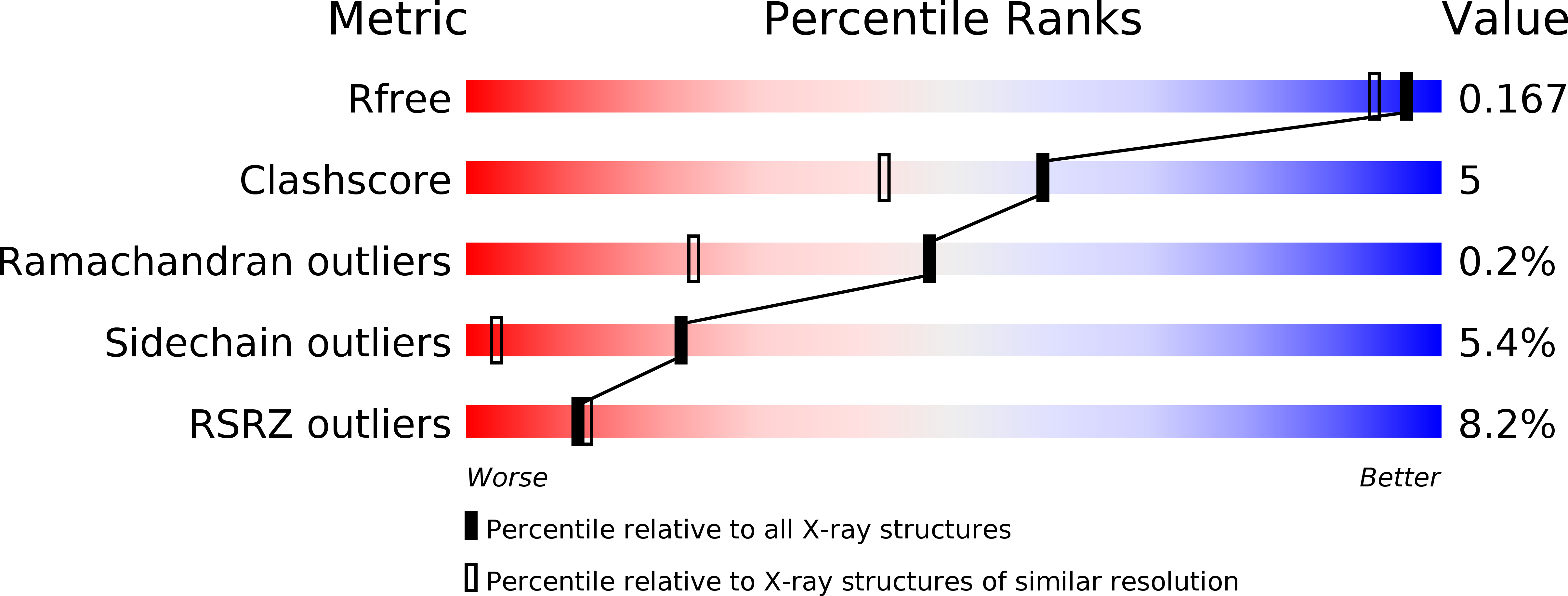
Deposition Date
2018-07-02
Release Date
2019-01-30
Last Version Date
2024-10-09
Entry Detail
PDB ID:
6A76
Keywords:
Title:
Crystal structure of the Fab fragment of B5209B, a murine monoclonal antibody specific for the fifth immunoglobulin domain (Ig5) of human ROBO1
Biological Source:
Source Organism:
Mus musculus (Taxon ID: 10090)
Host Organism:
Method Details:
Experimental Method:
Resolution:
1.50 Å
R-Value Free:
0.16
R-Value Work:
0.12
R-Value Observed:
0.13
Space Group:
P 21 21 21


